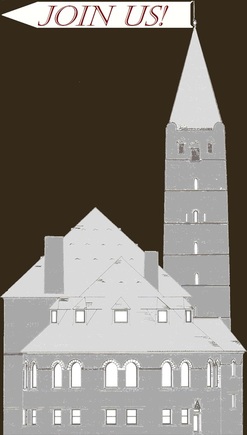WELCOME

The bounds of the current Baltimore-Washington Conference encompass an abundance of United Methodist History. Since 1855, when the society was first founded, it has been working to preserve and pass on this heritage from generation to generation. We invite you to explore that heritage through our archives, library and museum collection at Lovely Lane, and in historic sites and landmarks throughout the current conference territory.
Almost two and a half centuries ago Philip Wm. Otterbein and Robert Strawbridge came to spread the Gospel, in German and in English, from the Chesapeake's western shore, to the headwaters of the Potomac. They preached throughout a vast territory, outdoors or in structures such as the Strawbridge and the Geeting Meeting Houses.
In 1784, Otterbein participated in the ordination of Francis Asbury, the first elected bishop of the Methodists in America. Cokesbury College, the first Methodist College was opened in Harford County, albeit briefly from 1785-1795. In 1785, Otterbein instituted Annual conferences among his followers leading to their formation, at the turn of the next century in Frederick County, as the United Brethren [UB] Church.
The Methodist Protestant [MP] Church also formed here in 1830, even as this border territory became the center of controversy in the Methodist Episcopal [ME] Church. The ME Baltimore Conference emerged from the Civil War as three conferences.
The Baltimore Conferences of the northern and southern ME churches reunited with the Maryland Conference of MP churches in the reunited Methodist Church in 1939. The Washington Conference for African Americans, formed at Baltimore's Sharp Street Church on the eve of Emancipation in Maryland in 1864. would remain apart for a century. Finally, desegregation of Methodist Conferences in 1965 preceded and made way for union of the Evangelical United Brethren and Methodist Churches three years later.
Overlooking Batimore, in Mt. Olivet Cemetery's "Bishop's Lot," lie the earthly remains of Strawbridge, Asbury and other early Methodist divines, and beside the city's longest standing church, "Old Otterbein," is the grave of Bishop Otterbein. They are fittingly memorialized at these sites but their greatest monument is the United Methodist Church, which in 1968 brought together the two church bodies rooted in their ministries.
Almost two and a half centuries ago Philip Wm. Otterbein and Robert Strawbridge came to spread the Gospel, in German and in English, from the Chesapeake's western shore, to the headwaters of the Potomac. They preached throughout a vast territory, outdoors or in structures such as the Strawbridge and the Geeting Meeting Houses.
In 1784, Otterbein participated in the ordination of Francis Asbury, the first elected bishop of the Methodists in America. Cokesbury College, the first Methodist College was opened in Harford County, albeit briefly from 1785-1795. In 1785, Otterbein instituted Annual conferences among his followers leading to their formation, at the turn of the next century in Frederick County, as the United Brethren [UB] Church.
The Methodist Protestant [MP] Church also formed here in 1830, even as this border territory became the center of controversy in the Methodist Episcopal [ME] Church. The ME Baltimore Conference emerged from the Civil War as three conferences.
The Baltimore Conferences of the northern and southern ME churches reunited with the Maryland Conference of MP churches in the reunited Methodist Church in 1939. The Washington Conference for African Americans, formed at Baltimore's Sharp Street Church on the eve of Emancipation in Maryland in 1864. would remain apart for a century. Finally, desegregation of Methodist Conferences in 1965 preceded and made way for union of the Evangelical United Brethren and Methodist Churches three years later.
Overlooking Batimore, in Mt. Olivet Cemetery's "Bishop's Lot," lie the earthly remains of Strawbridge, Asbury and other early Methodist divines, and beside the city's longest standing church, "Old Otterbein," is the grave of Bishop Otterbein. They are fittingly memorialized at these sites but their greatest monument is the United Methodist Church, which in 1968 brought together the two church bodies rooted in their ministries.
Archives

The archives of the Baltimore-Washington Conference include records of Annual Conferences and some conference agencies, certain personal papers and records of certain local churches that have been discontinued.
Library

The library of the United Methodist Historical Society includes publications such as biographies, histories, historic Books of Discipline, Worship and Hymnals. Links to digitized publications are also on the library page.
Museum

The museum at Lovely Lane provides an overview of the United Methodist history of this area through artwork and artifacts and the landmark 1884 Lovely Lane Church, the ME Church’s Centennial monument to the Christmas Conference.
Landmarks

The bounds of the current Baltimore-Washington Conference encompass many sites significant in the history of the church and the nation, including five United Methodist Heritage landmarks.
|
The Lovely Lane Museum is located at
|
